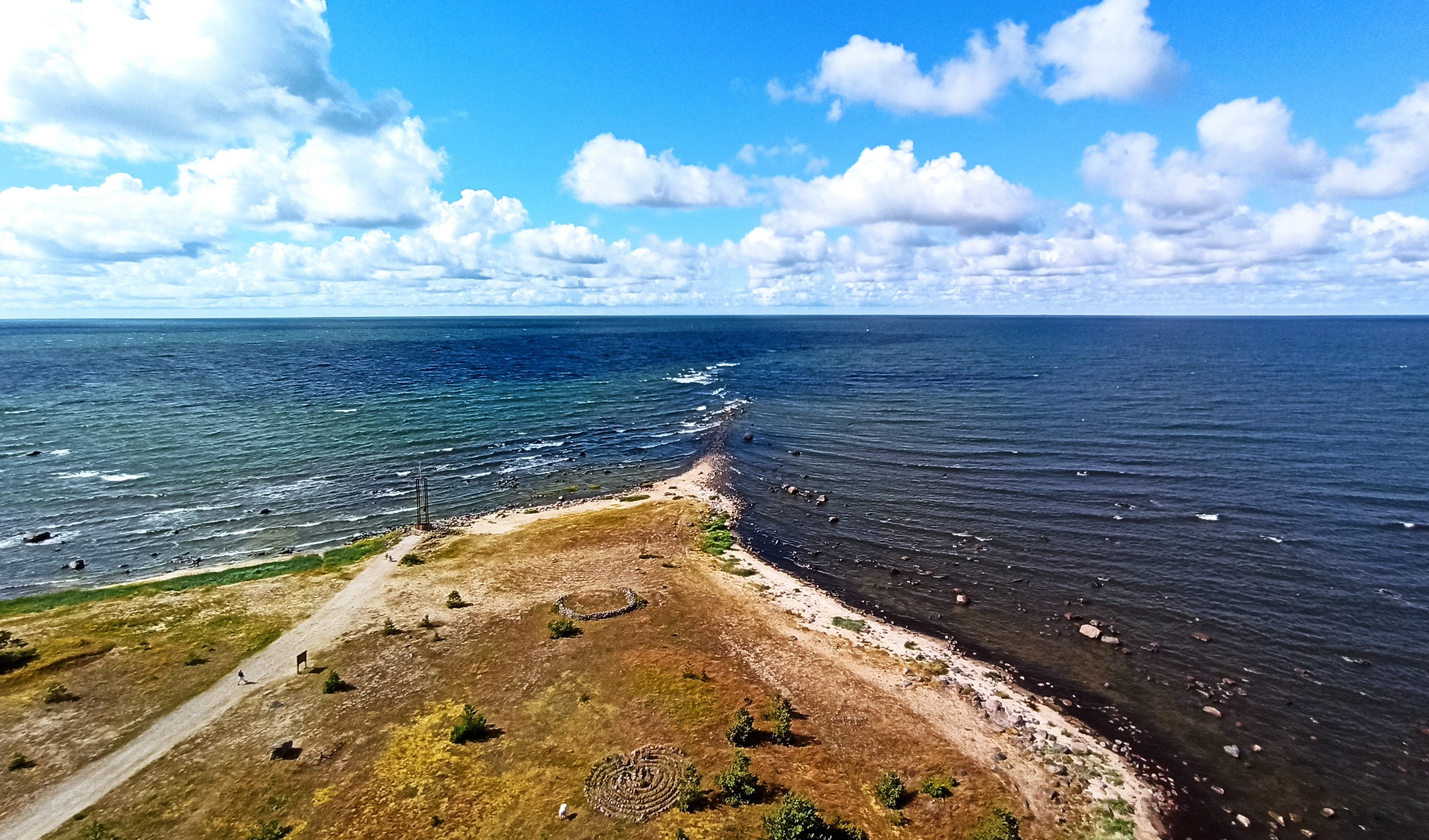The Baltic Sea is the second largest inland sea in the world
A sea is a part of the world ocean that is more or less separated from the oceans or other seas by continents, islands, or bottom uplands. The seas are divided into: the inter-island seas (a part of the world ocean surrounded by archipelagos), the inland seas (a sea connected to the ocean or other seas by straits), and the peripheral seas (a sea adjacent to a continent) [1].

WATER AS FAR AS THE EYE CAN SEE. The Tahkuna Cape in Hiiu County and the Baltic Sea behind it. By: Kaisa Viira
The Baltic Sea is an inland sea connected to the North Sea by the shallow and narrow Danish straits. The Baltic Sea is also the second largest inland sea in the world after the Mediterranean Sea. Due to its narrow connection with the North Sea, the Baltic Sea is a brackish water body – the water here is a mixture of salt water from the ocean and fresh water from rivers and precipitation [2].
- The area of the Baltic Sea is approximately 365,000 km2.
- The catchment basin of the Baltic Sea (the area from which the Baltic Sea gets its water) is approximately 1,745,000 km2, which is almost 5 times larger than the sea itself.
- The average depth of the Baltic Sea is 55 m (maximum depth is 459 m).
- The amount of water in the Baltic Sea is about 21,000 km3.
- The water exchange of the Baltic Sea with the ocean is slow. It takes about 30 years for all water to change in the Baltic Sea.
- Approximately 85 million people live in the Baltic Sea basin.
- The countries bordering the Baltic Sea are Denmark, Estonia, Finland, Germany, Latvia, Lithuania, Poland, Sweden, and Russia.
- The Estonian sea areas are located in the Gulf of Finland, the Gulf of Riga, and the Väinameri Sea.
Last modified: 15.11.2021
______________________________________
[1] https://et.wikipedia.org/wiki/Meri
[2] http://foodweb.ut.ee/s2/209_281_136_Laanemeri.pdf